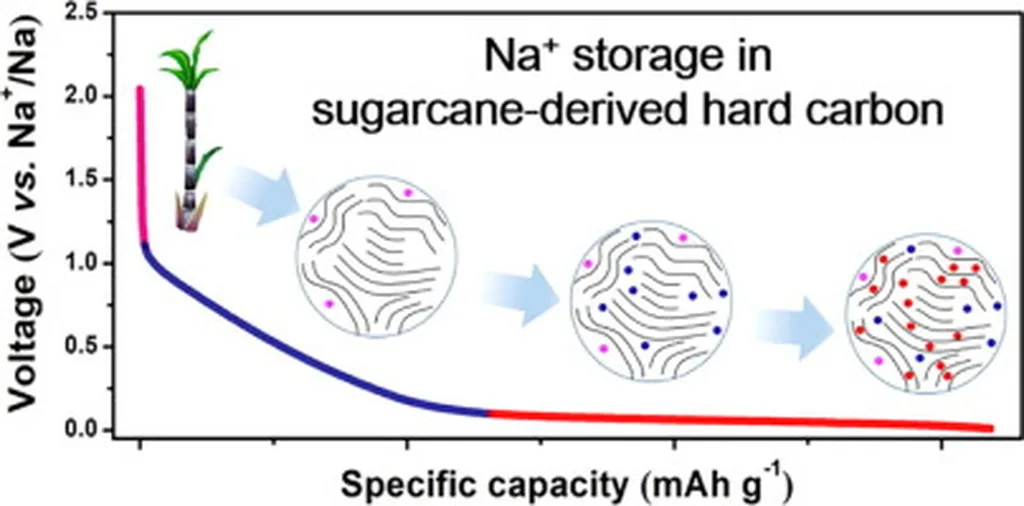In a significant stride towards sustainable energy solutions, researchers have developed a novel anode material for lithium-ion batteries (LIBs) using an unlikely source: sugarcane bagasse. This agricultural byproduct, often discarded, has been transformed into a high-performance component for energy storage systems. The study, led by Thao Nguyen Bui Thi from the Faculty of Materials Technology at Ho Chi Minh City University of Technology (HCMUT) and Vietnam National University Ho Chi Minh City, opens new avenues for eco-friendly and cost-effective battery production.
The research, published in *Materials Research Express* (translated to English as “Expressions of Materials Research”), introduces a composite material composed of Mn2SnO4 and carbon derived from sugarcane bagasse, denoted as Mn2SnO4@C. The synthesis process is notably simple and efficient, involving impregnation followed by pyrolysis at 600°C for just two hours. This method not only utilizes sugarcane bagasse as a cost-effective carbon source but also enables the in situ incorporation of Mn2SnO4 into a carbon matrix, using MnCl2/SnCl2 salt mixtures as precursors.
The unique structure of the Mn2SnO4@C composite is associated with the transition of metal oxides during lithiation/delithiation cycles, which are crucial processes in the functioning of LIBs. Electrochemical evaluations reveal that the composite exhibits excellent lithium storage performance, including a high specific capacity and good cycling stability. Notably, the composite demonstrates a high capacity of 971 mAh g−1 at the first discharge cycle and maintains a discharge capacity of 541 mA g−1 after 80 cycles. Additionally, coulombic efficiency reaches over 95% after the first three cycles and achieves 100% thereafter.
“This research highlights the potential of agricultural biomass as an eco-friendly and cost-effective resource for advanced energy storage systems,” said Thao Nguyen Bui Thi, the lead author of the study. The use of sugarcane bagasse not only reduces waste but also provides a sustainable alternative to traditional carbon sources.
The implications of this research are profound for the energy sector. As the demand for LIBs continues to grow, driven by the rise of electric vehicles and renewable energy storage solutions, the need for sustainable and high-performance materials becomes increasingly critical. The Mn2SnO4@C composite offers a promising alternative to conventional anode materials, potentially reducing the environmental impact and cost of battery production.
Moreover, the study underscores the importance of innovative research in materials science. By exploring unconventional sources and methods, scientists can develop solutions that are both technologically advanced and environmentally responsible. This research not only advances the field of energy storage but also sets a precedent for future developments in sustainable technology.
As the world transitions towards a greener future, the integration of agricultural byproducts into advanced materials represents a significant step forward. The Mn2SnO4@C composite, with its impressive performance and eco-friendly attributes, could play a pivotal role in shaping the next generation of lithium-ion batteries. The research published in *Materials Research Express* serves as a testament to the potential of interdisciplinary collaboration and innovative thinking in addressing global energy challenges.

